Nearly 300 million people in the world use the Cyrillic alphabet when writing. These are Slavic people from Southeastern Europe, as well as Russians, Ukrainians, Belarusian, representatives of numerous non-Slavic peoples in Russia – peoples from the Caucasus region, Siberia, people from former Soviet republics and Mongolians. At least 50 languages are currently written or used to be written in Cyrillic. Bulgaria is the only EU Member State using the Cyrillic and Bulgaria’s cultural contribution with its 30 letters cannot be denied. Until 2007 only the Greek and Latin alphabets were official in the EU.
BNR’s Sylvia Nikolova made a trip to the town of Pliska, which was the capital of Bulgaria in the period 681-893. Her goal was the unique cultural and historical complex “Yard of the Cyrillic alphabet”.
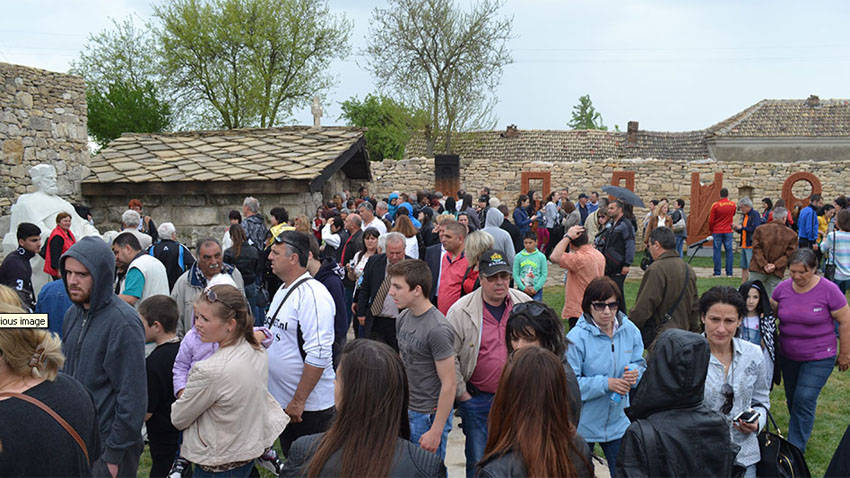
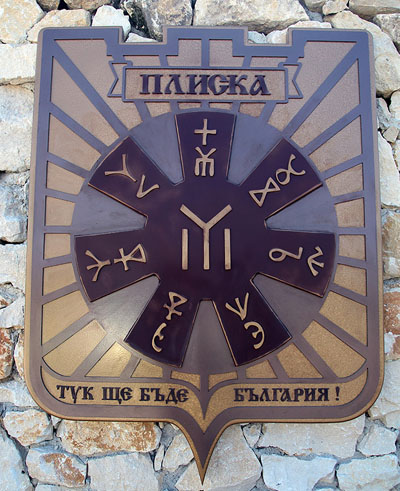 On the huge gate one reads the words of Khan Asparukh: “This is where Bulgaria will be.” The yard is full of visitors and among them is the man behind the idea for the complex - Karen Alexanian. He is an Armenian from Yerevan but has been living in Bulgaria for 20 years. He is a philologist by education and zealous protector of Christian values. At his initiative the 2 meter-high Cyrillic letters were made in Armenia by 12 Armenian sculptors and were then transported to Bulgaria. The letters are made of tuff which collects the warmth of Armenia. The letters are placed in the green yard and each one has its message. Karen Alexanian took us on a tour in the yard.
On the huge gate one reads the words of Khan Asparukh: “This is where Bulgaria will be.” The yard is full of visitors and among them is the man behind the idea for the complex - Karen Alexanian. He is an Armenian from Yerevan but has been living in Bulgaria for 20 years. He is a philologist by education and zealous protector of Christian values. At his initiative the 2 meter-high Cyrillic letters were made in Armenia by 12 Armenian sculptors and were then transported to Bulgaria. The letters are made of tuff which collects the warmth of Armenia. The letters are placed in the green yard and each one has its message. Karen Alexanian took us on a tour in the yard.
“The letters are not placed in alphabetical order. Right in front of the entrance letters read Pliska because I want people to remember that Bulgaria was the first country to make Cyrillic its official alphabet under the rule of Bulgarian Knyaz Boris I – the Baptist (852-889). That is why the museum is here in Pliska – the first Bulgarian capital city. The idea is to promote culture and Christianity. Cyrillic was created in order for people to write in Old Church Slavonic language and Bulgaria was the first Slavic country to adopt Orthodox Christianity as its official religion and Cyrillic as its official alphabet.”
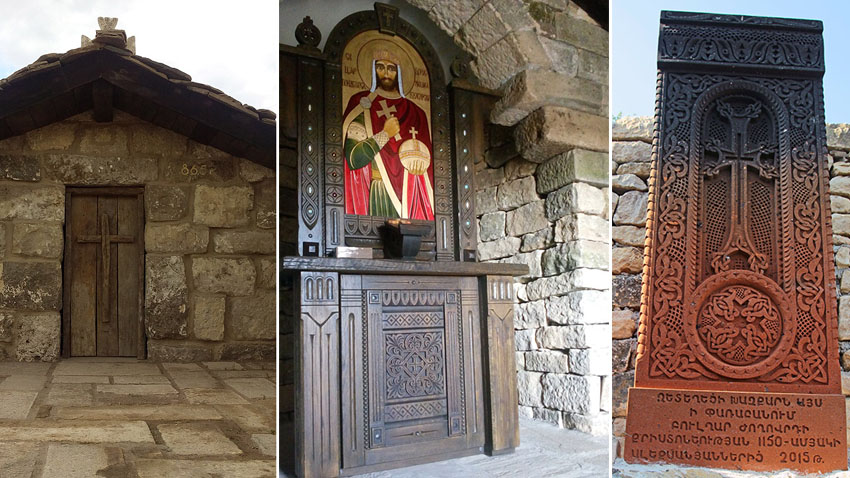
In the yard there is a chapel of St. Tsar Boris I with stone walls and a carved altar. To the right one can see an Armenian cross-stone – khachkar, on which one reads in Armenian: "This stone was placed for the glory of the Bulgarian people on the occasion of 1150 years since Christianization."
"We have a gallery which tells the story of the Cyrillic alphabet in pictures. The paintings show scenes of the life of St. Kliment Ohridski and some are based on scientific works by historian Prof. Plamen Pavlov. We gave the ideas to various Bulgarian artists. The major paintings are by Assoc. Prof. Ivan Uzunov, Head of the Painting Department of the University of Veliko Turnovo, young artist Mihaela Mihailova and Valentin Goleshev.”
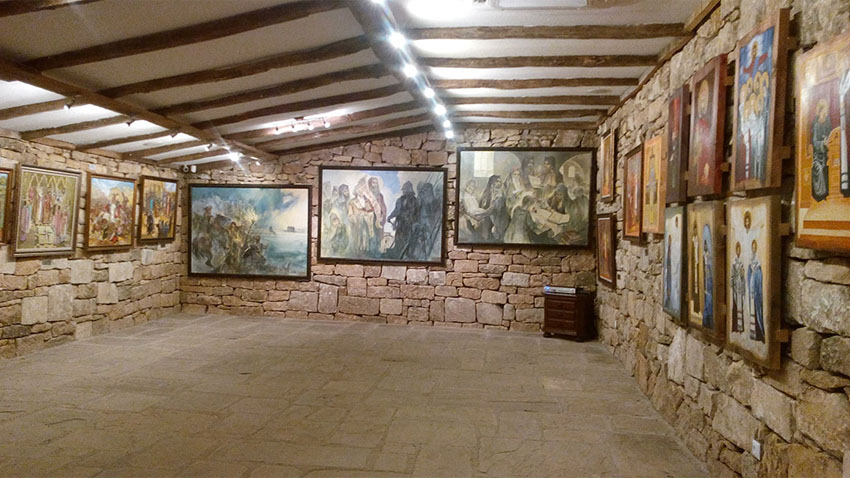
The Yard of the Cyrillic alphabet is a lively place. First-graders from cities like Shumen, Varna, and Ruse receive their certificates here at the end of the year. This is a cultural center that bridges borders. In the last days of May the yard hosted the 10th Slavic international poetry festival "Slavonic Hug." Poets and writers from 20 countries that use the Cyrillic alphabet read their works in the Yard of the Cyrillic alphabet.
When leaving they see the imposing sculptures of Knyaz Boris I – the Baptist and Saints Cyril and Methodius, co-patrons of Europe, watching over the letters and all Bulgarian.
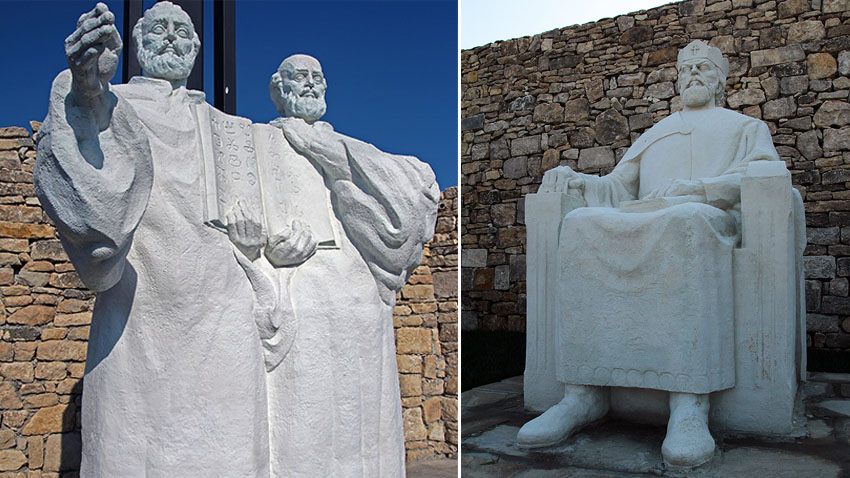
English: Alexander Markov
The national awakeners of Bulgaria are the individuals for whom we feel not only gratitude and admiration, but also perceive as some of the most significant figures in our history, because they awaken our sense of national togetherness. However, what is..
People with mental disabilities will share their unique perspective on Sofia's architectural heritage in the photographic exhibition "Architectural Stories from Old Sofia". It will be opened on November 1 in the Cultural Space of the Central Sofia Market..
Although they came with the calling to uplift our world, the chosen ones not only followed their predetermined path, but also risked not fully revealing themselves because of their sacred duty to the Fatherland. Among these Renaissance Bulgarians was..
The national painting triennial with the theme "Bridges" will bring together 84 contemporary artists who will show 106 works in the Hristo Tsokev..
The exhibition "The Transylvanian Medieval Fortress" by the Romanian artist Ovidiu Carpusor will be presented from November 9 to 23 in the "Quiet Nest"..
The OKO International Ethnographic Film Festival will be held in Sofia in the period November 8 to November 15th. The forum is realized..

+359 2 9336 661
